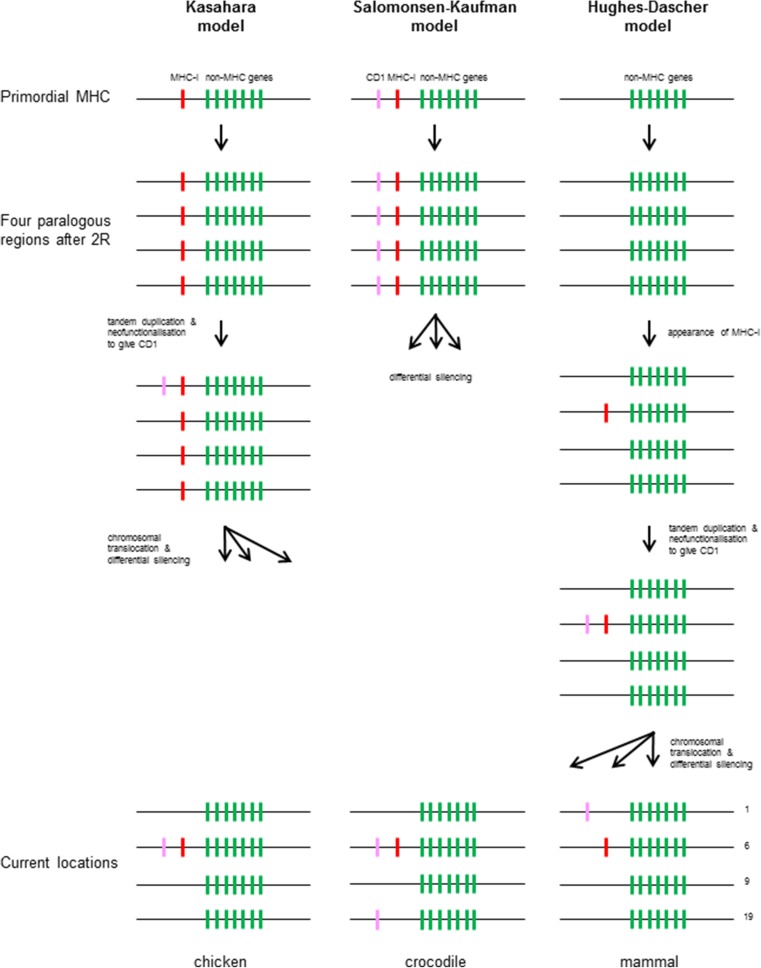Fig. 1.
Three models have been proposed for the origin and subsequent evolution of CD1 genes. Lefthand column, the Kasahara model, in which classical MHC class I genes emerge in a primordial MHC before the two rounds of genome-wide duplication, then a duplication in one paralogous region gives rise to the gene that evolves into a CD1 gene, followed by differential silencing to give classical class I genes in the MHC and CD1 genes in the CD1 region of mammals, but requiring chromosomal translocations to put CD1 onto other chromosomes in birds and reptiles. Middle column, the Salomonsen-Kaufman model, in which classical MHC class I genes emerge in a primordial MHC and then one class I gene evolves into a CD1 gene, followed by two rounds of genome-wide duplication, with differential silencing to give both classical class I genes and CD1 genes in the MHC of the lineage that led to birds, classical class I genes in the MHC and CD1 genes in the CD1 region in the lineage leading to mammals, and classical class I genes in the MHC but CD1 in various regions in reptiles. Righthand column, the Hughes-Dascher model, in which the two rounds of genome-wide duplication are followed by the emergence of classical MHC class I genes in a primordial MHC next to one paralogous region, with a duplication in the MHC giving rise to the gene that evolves into a CD1 gene, with this arrangement persisting the lineage leading to birds, but with various translocations of CD1 genes out of the MHC near to a paralogous regions in the lineages leading to reptiles and mammals. Genes considered to part of the ancient paralogous region except for class I genes (green bars), classical class I genes (MHC-I) (red bars), and CD1 genes (pink bars). Paralogous regions are in order of the chromosome number found in humans: 1, chromosome 1; 6, chromosome 6 (MHC); 9, chromosome 9; 19, chromosome 19 (colour figure online)

